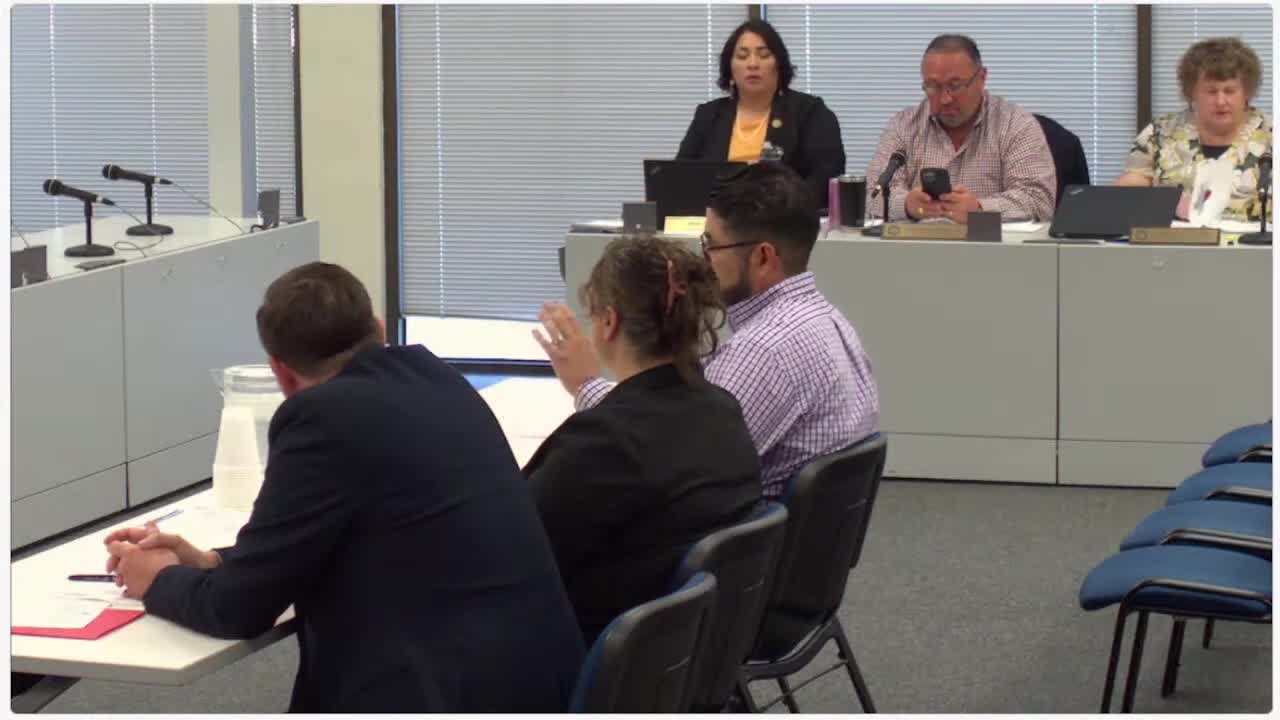Texas updates dog breeder licensing requirements to include fewer dogs for sale
September 20, 2023 | State Board of Veterinary Medical Examiners, Boards & Commissions, Executive, Texas
This article was created by AI summarizing key points discussed. AI makes mistakes, so for full details and context, please refer to the video of the full meeting. Please report any errors so we can fix them. Report an error »

On September 20, 2023, the Texas State Board of Veterinary Medical Examiners convened for a summit to discuss regulatory updates and enforcement measures concerning licensed dog and cat breeders. This meeting highlighted significant changes in the licensing requirements for breeders, reflecting a shift in the state's approach to animal welfare and regulation.
The board reported that there are currently 133 licensed dog and cat breeders in Texas, with 32 inspectors responsible for overseeing compliance across various programs. These inspectors conduct pre-license inspections to ensure that breeders meet the necessary standards before obtaining their licenses. The discussion emphasized the importance of these inspections in maintaining the integrity of the breeding industry and protecting animal welfare.
A key topic of the meeting was the recent legislative change that altered the criteria for breeder licensing. Previously, breeders were required to have 11 intact females and sell at least 20 animals per calendar year to qualify for a license. The new law, however, reduces the threshold to just five intact females with the intent to sell, eliminating the sales requirement. This change aims to broaden the scope of regulation, ensuring that more breeders are held accountable for their practices.
The board also clarified that there are exceptions to these licensing requirements. Breeders of hunting dogs, livestock dogs, and those involved in show trials are not subject to the same regulations. This nuanced approach aims to balance the need for regulation with the realities of various breeding practices.
The meeting concluded with a discussion on the enforcement of these regulations. Complaints against unlicensed breeders are investigated by the enforcement division, which assesses whether violations have occurred based on the established definitions and exceptions.
Overall, the summit underscored the Texas State Board of Veterinary Medical Examiners' commitment to enhancing animal welfare through effective regulation of the breeding industry. As the board continues to adapt its policies, stakeholders in the veterinary and breeding communities will need to stay informed about these changes and their implications for practice.
The board reported that there are currently 133 licensed dog and cat breeders in Texas, with 32 inspectors responsible for overseeing compliance across various programs. These inspectors conduct pre-license inspections to ensure that breeders meet the necessary standards before obtaining their licenses. The discussion emphasized the importance of these inspections in maintaining the integrity of the breeding industry and protecting animal welfare.
A key topic of the meeting was the recent legislative change that altered the criteria for breeder licensing. Previously, breeders were required to have 11 intact females and sell at least 20 animals per calendar year to qualify for a license. The new law, however, reduces the threshold to just five intact females with the intent to sell, eliminating the sales requirement. This change aims to broaden the scope of regulation, ensuring that more breeders are held accountable for their practices.
The board also clarified that there are exceptions to these licensing requirements. Breeders of hunting dogs, livestock dogs, and those involved in show trials are not subject to the same regulations. This nuanced approach aims to balance the need for regulation with the realities of various breeding practices.
The meeting concluded with a discussion on the enforcement of these regulations. Complaints against unlicensed breeders are investigated by the enforcement division, which assesses whether violations have occurred based on the established definitions and exceptions.
Overall, the summit underscored the Texas State Board of Veterinary Medical Examiners' commitment to enhancing animal welfare through effective regulation of the breeding industry. As the board continues to adapt its policies, stakeholders in the veterinary and breeding communities will need to stay informed about these changes and their implications for practice.
Don't Miss a Word: See the Full Meeting!
Go beyond summaries. Unlock every video, transcript, and key insight with a Founder Membership.
✓
Get instant access to full meeting videos
✓
Search and clip any phrase from complete transcripts
✓
Receive AI-powered summaries & custom alerts
✓
Enjoy lifetime, unrestricted access to government data
30-day money-back guarantee

